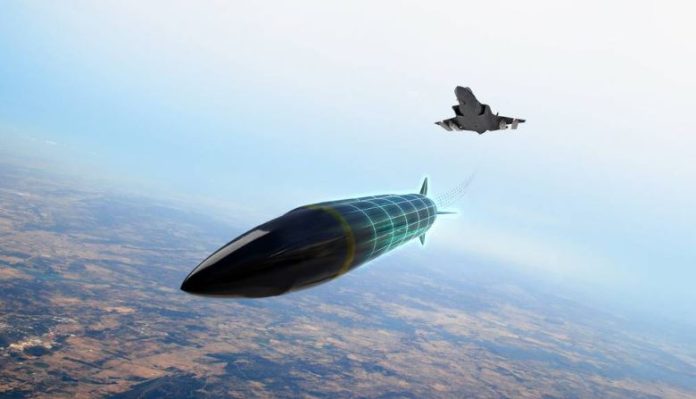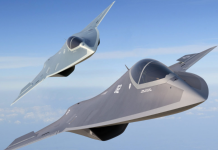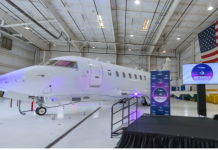WASHINGTON — The U.S. Air Force has awarded contracts to three companies for the first phase of a new program to develop an air-to-ground stand-in attack weapon that the F-35 jet could use to destroy enemy air defenses.
Lockheed Martin, Northrop Grumman and L3Harris Technologies said this week the service selected them for phase one of the SIAW program. The three-month contracts, each for $2 million, were awarded May 25, Lena Lopez, a spokeswoman for the Air Force Life Cycle Management Center’s Armament Directorate, said Wednesday.
The Air Force signaled it was preparing to move forward with the SIAW in supporting documents for its proposed fiscal 2023 budget, which for the first time requested $78 million to start procuring 42 of the weapons.
The Air Force said this weapon would allow it to strike enemy targets that create an anti-access, area-denial environment and can be rapidly moved. These potential targets include integrated air defense systems, ballistic missile launchers, land-attack and anti-ship cruise missile launchers, GPS jammers, and anti-satellite systems.
The stand-in weapon would have a shorter range than standoff weapons, which are designed to be fired from a distance outside the range of enemy defenses, typically by an aircraft such as a B-52.
An aircraft would fire this stand-in weapon after penetrating enemy airspace and getting closer to the target, Michael Stuart, Northrop’s director of business development, said in an interview Wednesday.
Stuart said the F-35 must carry the stand-in weapon within its bay, rather than on an external mount, to avoid compromising the jet’s stealth capabilities. He said it is unlikely the F-22 would be able to carry this weapon because its internal bay isn’t large enough.
The stand-in weapon would also be faster than other weapons the F-35 could carry, Stuart said, which would give the weapon a better chance of hitting its target before the enemy defense can intercept it.
The Air Force’s interest in developing a missile that could hit targets such as enemy air defenses is yet another sign of how its focus is shifting away from the relatively uncontested airspace of the Middle East over the last two decades and toward figuring out how to fight in a contested environment against an advanced enemy such as China.
This first phase of the SIAW program focuses on digital engineering and design. Lockheed said in its release that this is the first time the Air Force has had a fully digital weapons acquisition and development program.
Northrop said it will use its experiences from designing and producing the Advanced Anti-Radiation Guided Missile-Extended Range, or AARGM-ER, for the U.S. Navy and integrate it on F-35s.
L3Harris said in a release Wednesday that its Agile Development Group will lead its SIAW efforts and will take advantage of the group’s digital engineering capabilities. The Agile Development Group includes several thousand engineers, program managers, technicians, and operations professionals focused on quickly developing solutions to deal with a variety of emerging threats.
“L3Harris is looking forward to working with the Air Force and industry partners to go fast and deliver superior firepower and advanced capabilities to the warfighter,” Dave Duggan, president of L3Harris’s Agile Development Group, said in the release.
Lockheed said its Missiles and Fire Control division is using advanced digital engineering methods, pioneered by its Skunk Works unit, to design the SIAW. “Applying new and emerging technologies to the way we design, build and sustain our products across the enterprise will better equip the warfighter for success today and into the future,” the company said.
Stuart also said the Air Force wants this program to use an open-system architecture concept that would allow it to “plug and play” different modular systems. That way, different components could be easily combined without needing a lengthy test and evaluation process, and the weapon could be more easily upgraded.
“If you have a box that fits into [the Air Force’s] architecture, they want to make sure it can communicate fluidly across that entire spectrum of other potential subcomponents that it may need to interact with,” Stuart said.





